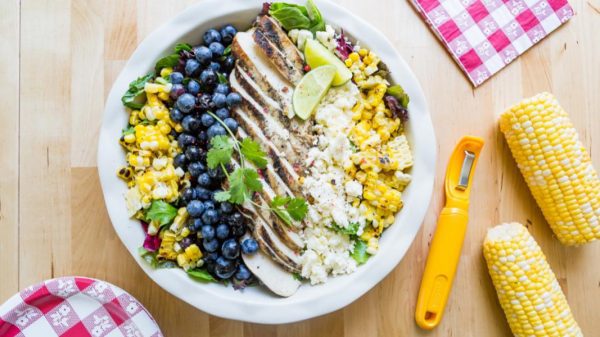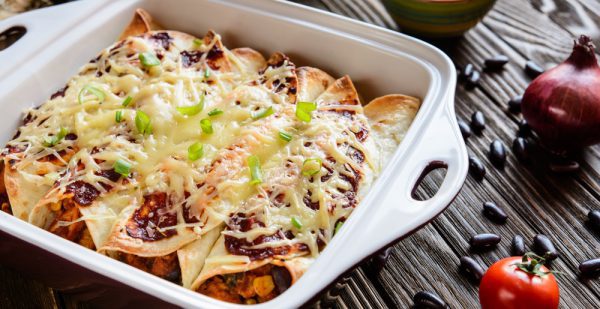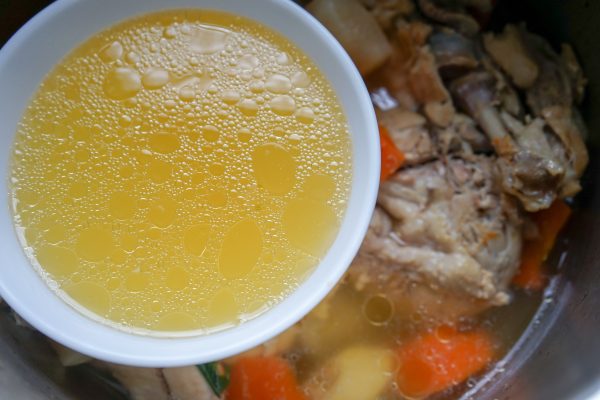
A whole roast chicken is a family dinner staple. Roasting a chicken is often one of the first kitchen skills we learned from our parents or grandparents, since it’s relatively easy and mostly hands-off. We might associate it with Sunday dinners or cozy winter evenings, or with the chicken soup that might have followed a few days later.
But a roast chicken isn’t just comfort food and nostalgia – it’s a secret superpower for getting dinner on the table. For modern families, letting the grocery store do the work is both popular and practical; depending on where you live and shop, a rotisserie chicken, fully cooked and ready to eat, can be even cheaper than buying a whole raw chicken in the butcher department. That’s dinner on the table for little money and even less time, plus the results are reliably delicious.
There are a few good arguments for knowing how to cook your own chicken, though, starting with the problem of availability. I know I’ve personally shown up to the store eager to grab a pre-cooked chicken to help me get ahead of dinner, and found the shelves empty. There’s also the fact that the store rotisserie chickens are almost always on the smaller side, at least where I shop; I can regularly buy a whole chicken that’s 5 lbs or more, but the pre-cooked ones are often under 4 lbs and look downright scrawny by comparison (not great when you’re feeding teenagers!). And then there’s the matter of seasoning. Most rotisserie chickens from the supermarket are high in sodium, which may not be the best choice for some families; they can also contain additives or allergens that make them unsafe for some people to consume (for example, shoppers with celiac disease might need to be extra-cautious about whether soy sauce or other wheat derivatives are part of the flavoring). All that aside, you might also just sometimes want your chicken to taste different than it did last week, and making your own is a good way to have the freedom to explore different flavor options.

Whether you buy a ready-made chicken or cook your own, the real power lies in making it stretch across more than one meal. That’s what really makes a whole chicken the key to easy, nutritious, budget-friendly family meals – it’s versatile and flexible, so you can use it in a number of different ways to get dinner on the table throughout the week. Here are some of our favorite suggestions for getting the most out of a roast chicken for your family dinners:
- Stretch the portion sizes. Typically, you can plan for a whole chicken to feed 4-6 people, depending on the size of the chicken and the size of the appetites at the table. But with enough filling side dishes, you may be able to stretch that further. Think: Potatoes, stuffing, rice, hearty root vegetables, and legumes like lentils, which pair well with chicken. If you can make a few cheap but satisfying sides, you can save more of the meat for another use.
- Skip the chicken dinner and go straight to the “leftovers.” Instead of serving the chicken with side dishes for dinner, divide up the meat right away and use it in soups, casseroles, salads, sandwiches, and other dishes that help stretch the chicken out into multiple servings where it’s part of the recipe, not the main event.
- Don’t sleep on the carcass. Canned or boxed chicken broth is convenient, but if you’ve bought a whole chicken, you could get that broth for free. (And it will probably taste better, too!) It might sound intimidating to make your own broth or stock, but it’s actually simple, and it becomes even easier if you have a slow cooker. Making broth or stock from your chicken bones and some vegetable scraps means you can turn that chicken dinner into a big pot of soup, stew, or pot pie.
- Use the drippings. Every bit counts, and the drippings from a chicken are both useful and flavorful. If you’ve roasted your own chicken, cooking potatoes, Brussels sprouts, or root vegetables in the same pan with the drippings will make a delicious side dish without requiring you to use another cooking oil. You can even save the drippings in a jar in the refrigerator and use them in place of oil or butter when you start a soup, stew, or casserole later in the week.
Looking for cooking advice or recipes to help you stretch your chicken into family-friendly meals? We’ve got lots of tips and ideas below!

3 Roast Chicken Recipes
We’ve got three easy, delicious recipes for roasting a whole chicken, with different flavor profiles. You can use these as a guideline, and feel free to vary the herbs and spices you choose to create a new family favorite!
A basic roast chicken is fairly simple. My favorite way to do it is with a little herbed butter rubbed both under and over the skin, as in this Sunday Roast Chicken recipe. To cook the chicken:
- Preheat the oven to 400 degrees. Remove the giblets from the cavity of the chicken, rinse inside with cold water, and pat dry with paper towels.
- Place the chicken breast-up in a roasting pan. Run your fingers between the skin and the meat of the chicken to loosen it, then rub underneath and on top of the skin with herb butter (exact directions for the butter are available in the recipe link).
- If you like, stuff a quartered onion and lemon into the cavity of the chicken. You can skip this step if you prefer.
- Roast the chicken at 400 degrees for 60-90 minutes, depending on the size of the chicken (it should be about an hour for a 4-pound bird). The chicken is done when a thermometer inserted into the thickest part of the breast and the thigh registers 165 degrees, or when you can cut the leg at the joint and see the juices run clear.
- Let the chicken rest at room temperature, covered with foil, for about 15 minutes before carving.
You can also try these recipes for roast chicken:
Slow Cooker Method for Cooking a Whole Chicken
If you’re looking for tender meat and don’t care about crispy skin, the slow cooker can be a convenient option for cooking a whole chicken. I especially like to use this method when I just want plain chicken to reinvent for quick lunches and dinners throughout the week. Plus, while I already have the slow cooker out on the counter, I can pull the cooked meat from the bones and toss the carcass back in with some water to finish making stock.
Method:
- Slice two medium onions into thick (½-inch or so) rings. Reserve the peels and trimmings for later.
- Break 3 medium carrots into thirds. If you have celery on hand, break two or three stalks into pieces.
- Cover the bottom of your slow cooker insert with the sliced/broken vegetable pieces to make a bed for the chicken.
- Clean the cavity of your chicken, then set it on top of the bed of vegetables.
- Season with salt and pepper, and add ¼ cup of water to the bottom of the slow cooker.
- Cover and cook on LOW for 4 hours.
Bonus Chicken Stock (Slow Cooker Method):
- Once the chicken is cooked, remove it from the slow cooker and let it cool enough to handle. Leave the vegetables and any accumulated liquid in the slow cooker insert.
- When the chicken is cool enough to handle, discard the skin and remove the meat from the bones. Reserve the meat for other uses.
- Add the bones back to the slow cooker, along with the onion peels and trimmings you saved earlier. I like to throw in about a tablespoon of whole black peppercorns and 1-2 bay leaves as well.
- Pour in 8 cups of water, cover, and set to LOW for anywhere from 8-14 hours. A shorter cooking time will yield a lighter broth; longer cooking times make for stronger stock with more collagen and deeper flavor.
- When you’re done cooking your stock, let it cool, then strain it through a fine mesh strainer to remove all the solids. You can store it in the refrigerator for up to a week, or freeze it for 6 months.
Making Chicken Stock Without a Slow Cooker
If you’d like to make your own chicken stock, but don’t have a slow cooker, you can use the stovetop method instead. Here’s how to make homemade chicken stock on the stovetop:
- Put the chicken carcass in a large pot.
- Add a medium onion, quartered, with the skin; the leaves and base trimmed from a bunch of celery, or 2-3 roughly chopped celery stalks; and the trimmed ends from a bag of carrots, or 2-3 medium carrots, broken into pieces.
- Add 8-12 cups of water, a tablespoon of whole black peppercorns, and 1-2 bay leaves. You can also add 1-2 teaspoons of salt if you prefer.
- Cover and bring the pot to a boil, then reduce the heat to low and simmer for 3-4 hours, stirring occasionally. If you see a scummy-looking foam rise to the top, skim it off with a spoon and discard.
- Cool, then strain through a fine mesh strainer to remove all the solids. Store the stock in the refrigerator for up to a week, or freeze it for 6 months.
Waste-Free Kitchen Tip: Whenever you peel onions or trim celery or carrots for a recipe, save the peels and trimmings in a zip-top bag in the freezer. Then those vegetable scraps can be used for making stocks and broths whenever you’re ready.
25 Recipes to Use the Meat of a Whole Chicken
If you’re looking for ideas to help you use up the meat from your whole chicken, we’ve got lots of recipes to suggest! You can substitute the already-cooked chicken meat in almost any recipe that calls for cooking, then slicing or shredding chicken breasts; just skip the cooking step and proceed from there. That’s what you’ll do in many of the meals listed below.
In addition to these recipes, you can toss your cooked chicken on top of any supermarket salad kit, roll it into wraps with your favorite toppings and condiments, use it to top rice bowls or ramen, or scatter it on top of premade pizza dough with your choice of sauce, cheese, and toppings. We’ve got a few of these suggestions outlined in our collection of No-Fail Family Dinners.
- Chicken Fajita Pasta
- Quick Trick Chicken Tacos
- Chicken and Vegetable Lentil Soup
- Crispy Chicken Taquitos
- Chicken and Broccoli Fettucine Alfredo

- Chicken, Corn, and Blueberry Salad
- Build Your Own Pasta Picnic
- Chicken Santa Fe Soup (add the cooked, shredded chicken at the end and warm briefly before serving)
- Build Your Own Baked Nachos
- Turkey Pesto Paninis (substitute shredded chicken for the turkey)

- The Elder Family’s White Chicken Chili (simmer all the ingredients in the first step, without the chicken, for 5-10 minutes; then add the shredded chicken and simmer 5 minutes before proceeding with the rest of the recipe)
- Apple Chicken Stir-Fry (skip stir-frying the chicken, and add cubed cooked chicken to the recipe to warm through before serving)
- Chicken Tortas
- Chicken Souvlaki (warm the chicken briefly with a drizzle of the vinaigrette for moisture and flavor)
- Easy Cheesy Enchiladas

- Chicken Salad with Cranberries
- Waldorf Chicken Salad
- Dress-it-in-a-Bowl Caesar Salad
- Tasty Italian Chicken
- Do It Yourself Salad

- Red Hot Fusilli
- Pasta with Oil and Garlic (add chicken and any other mix-ins you like for a complete meal)
- Baked Veggie Quesadillas or Black Bean Quesadillas (add shredded cooked chicken to the filling)
- Chicken Noodle Soup
- Quinoa and Black Bean Bowls (add chicken for an extra protein punch)


